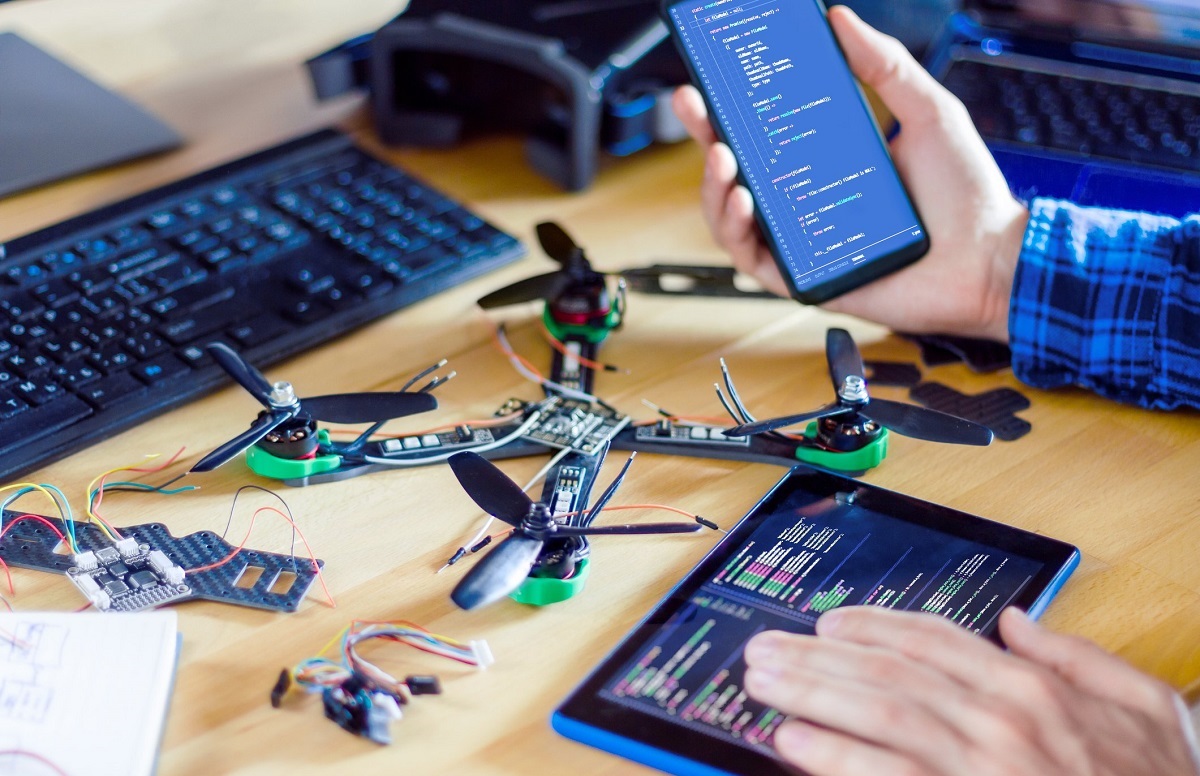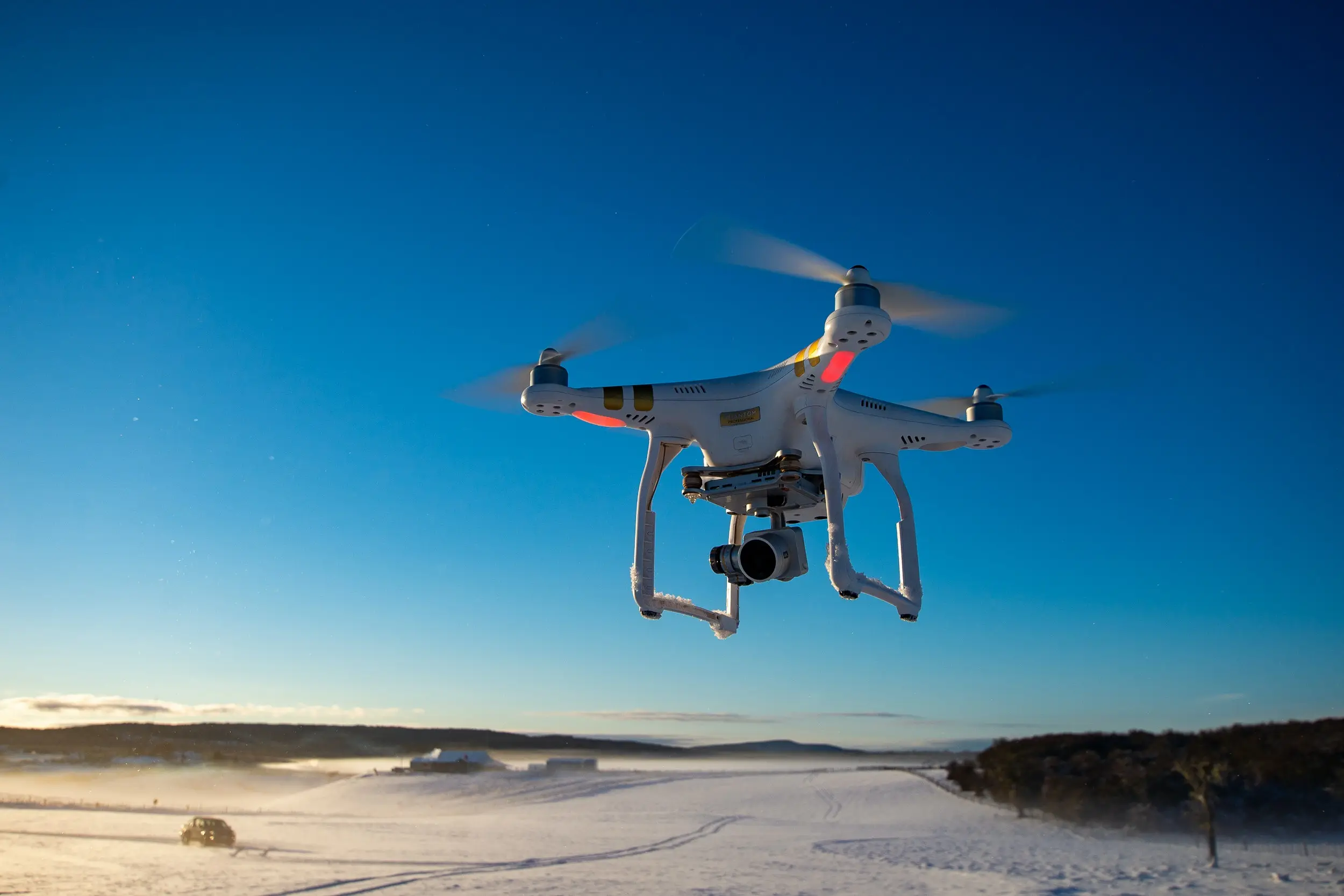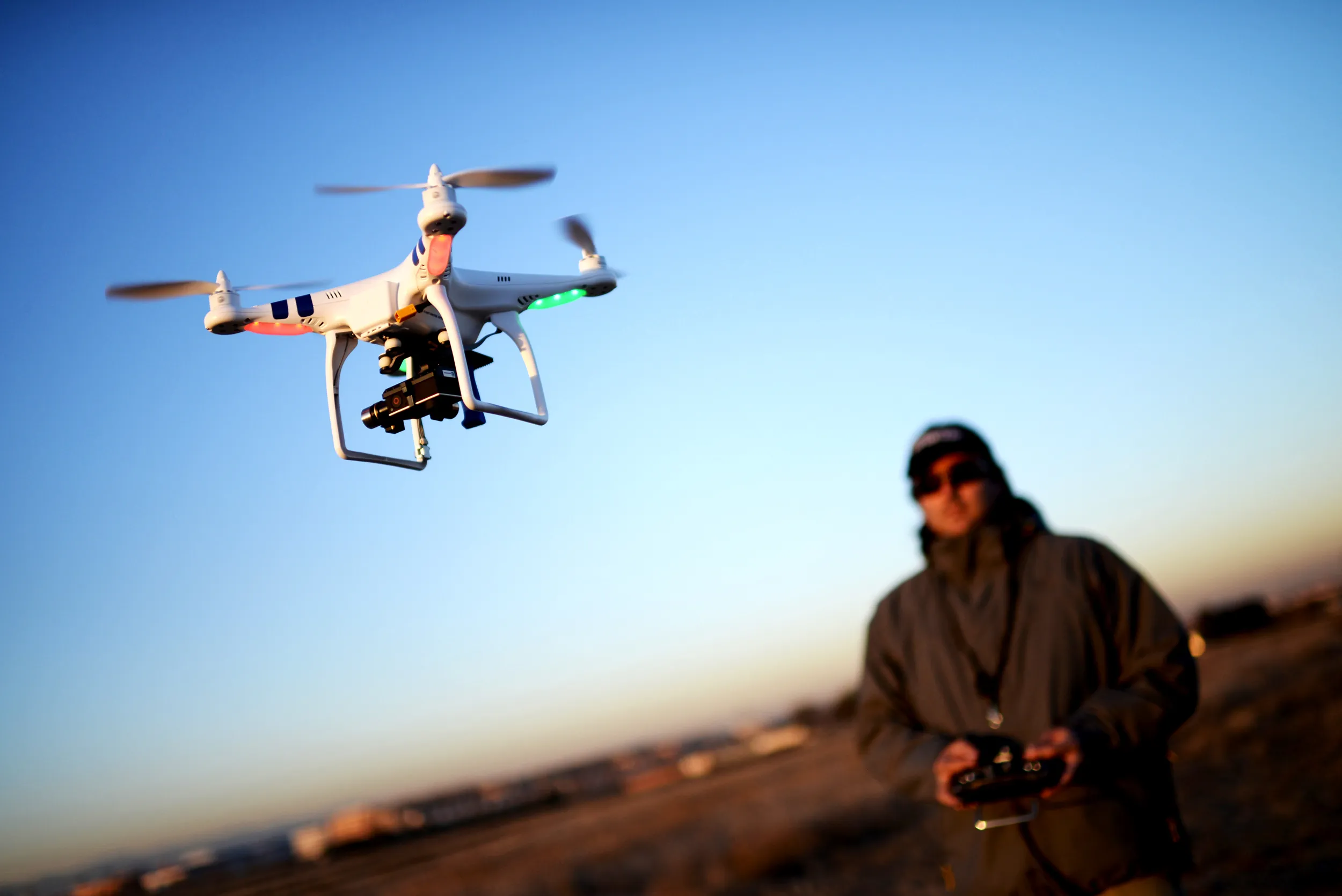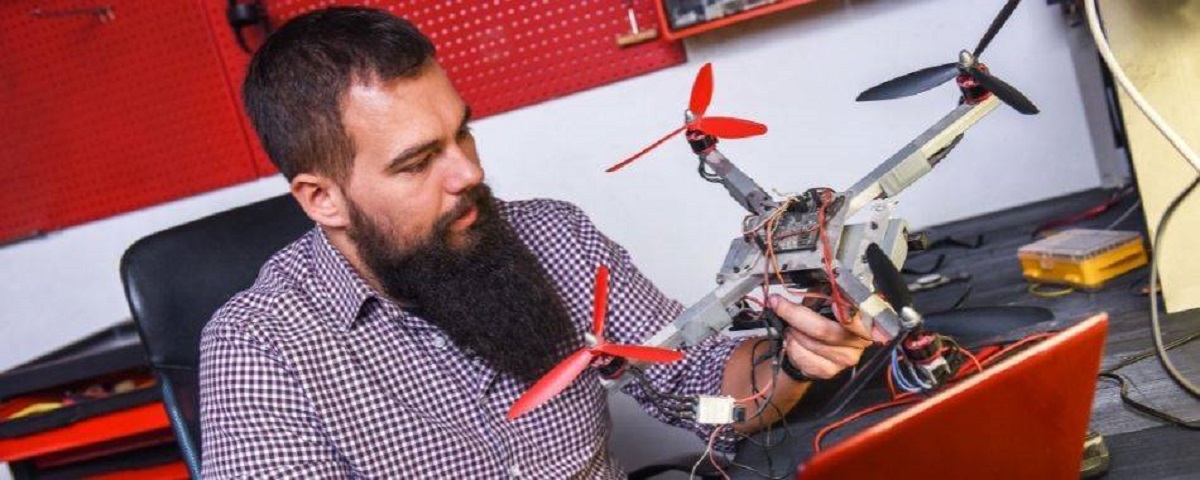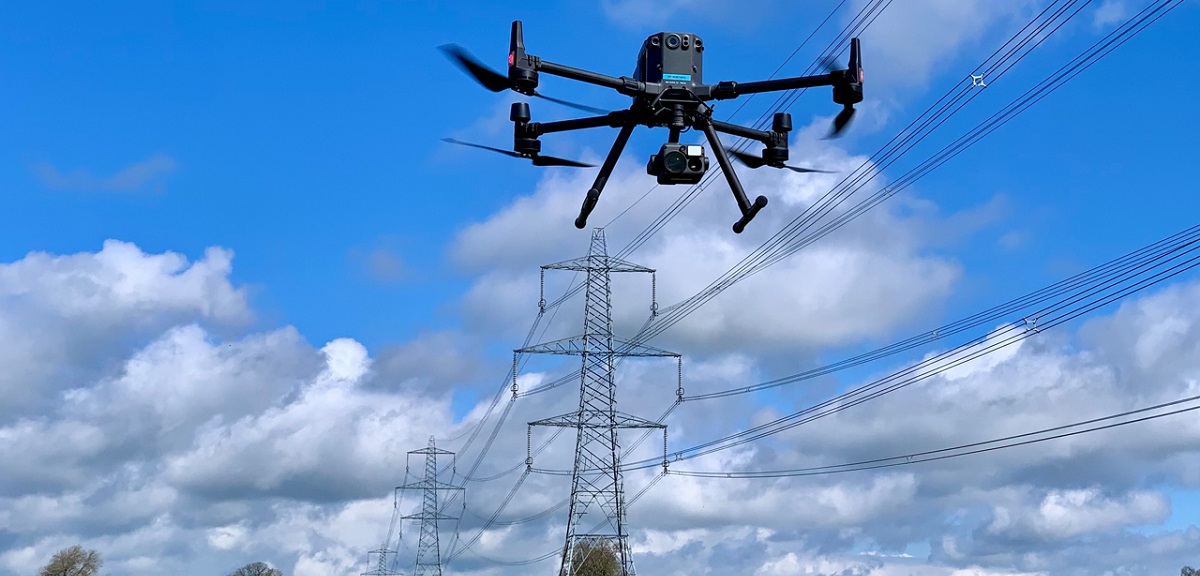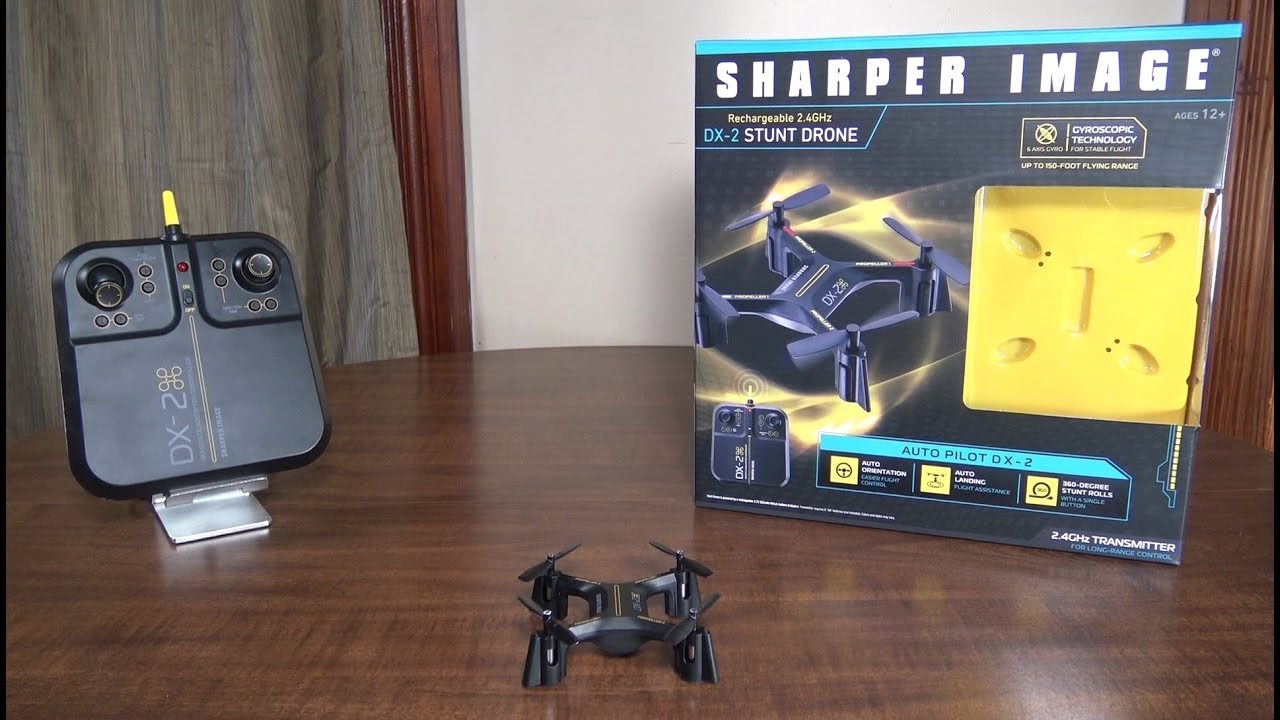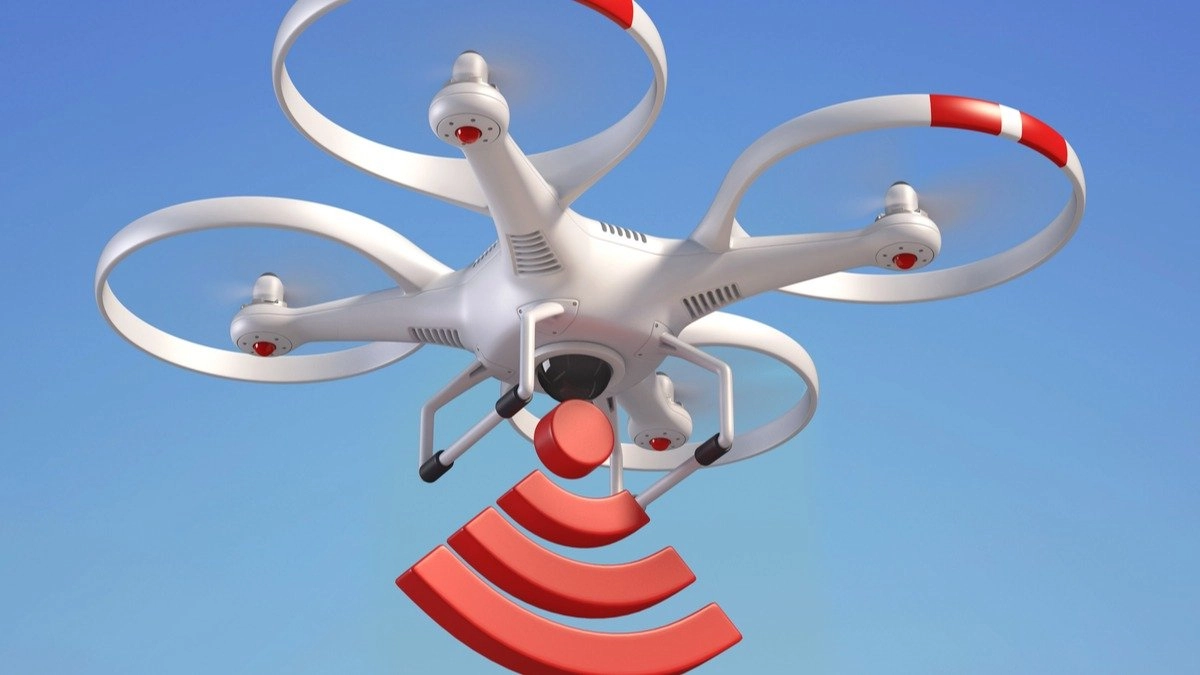Introduction
As drones become increasingly popular and accessible, understanding how they are controlled is essential for both enthusiasts and curious onlookers. Drones, also known as unmanned aerial vehicles (UAVs), are versatile devices that can perform a wide range of tasks, from aerial photography to package delivery. But how exactly are they controlled?
The control mechanism of a drone involves a combination of manual input from the operator and autonomous flight systems. This article will delve into the fascinating world of drone control, explaining the role of the controller, the components of a drone, the use of radio control frequencies, and the various flight modes and controls that make drone flight possible.
The controller, often referred to as a transmitter, is the primary interface between the operator and the drone. It allows the operator to send commands and control the movement of the drone in real-time. The components within the drone, including the flight controller, GPS systems, and onboard sensors, work together to execute these commands and maintain stability during flight.
Radio control plays a crucial role in drone operation. Drones typically use radio frequencies to establish a communication link between the controller and the onboard receiver. These frequencies enable real-time transmission of control signals, allowing the operator to have instantaneous control over the drone.
Within the controller, there are different input mechanisms, such as joysticks and throttle controls. These control sticks allow the operator to manipulate the drone’s movement along different axes, including ascent and descent, forward and backward, left and right, and rotation. Understanding these control mechanisms is vital for achieving precise and smooth flight maneuvers.
Moreover, advancements in technology have enabled autonomous flight capabilities in drones. GPS systems, gyroscopes, and accelerometers help to stabilize the drone and maintain its position and orientation in the air. Autopilot systems and flight controllers allow drones to perform pre-programmed flights, follow specific routes, and even return to their takeoff point automatically.
By familiarizing ourselves with the intricacies of drone control, we can appreciate the skill and precision required to operate these remarkable devices. So, let’s delve deeper into the components, systems, and controls that make drone flight possible.
The Role of the Controller
The controller, also known as the transmitter, is the essential interface between the operator and the drone. It is the device that the operator holds and uses to send commands and control the movement of the drone. The controller is equipped with input mechanisms such as joysticks, switches, buttons, and sliders, allowing the operator to manipulate the drone’s flight and perform various tasks.
The controller serves as the link that connects the operator’s intentions to the drone’s actions. When the operator manipulates the controls, the transmitter sends signals to the drone, instructing it to carry out specific movements or actions. These signals are transmitted wirelessly using radio frequencies.
One of the primary responsibilities of the controller is to maintain a secure and stable connection with the drone. This connection is established through the use of radio control frequencies. The controller operates on a specific frequency, and the drone’s receiver is tuned to the same frequency. This ensures seamless communication between the controller and the drone, allowing the operator to have precise control over the aircraft.
Furthermore, the controller plays a vital role in providing feedback to the operator. Many sophisticated controllers are equipped with LCD screens or LED displays that provide real-time information about the drone’s status, including battery life, flight mode, altitude, and other important metrics. This feedback helps operators make informed decisions and adjust their flying techniques accordingly.
In recent years, controllers have seen significant advancements in terms of design and technology. They have become more ergonomic and intuitive, with customizable buttons and adjustable control sensitivity to meet the unique preferences of each operator. Some controllers even feature built-in screens or smartphone compatibility, allowing operators to view live video feeds from the drone’s camera, further enhancing the flying experience.
Ultimately, the controller is a critical tool that puts the operator in command of the drone. It translates the operator’s input into precise instructions that allow the drone to perform complex maneuvers, capture stunning aerial imagery, or carry out specific tasks. By understanding the role of the controller, we can appreciate its importance in facilitating the safe and enjoyable operation of drones.
The Components of a Drone
Understanding the components of a drone is essential to comprehend how these unmanned aerial vehicles (UAVs) operate and maneuver through the skies. Drones are composed of various elements, each serving a specific purpose in their flight and functionality. Let’s take a closer look at the key components that make up a drone:
1. Frame: The frame of a drone acts as its structure, providing rigidity and support for other components. Drone frames are typically made of lightweight materials such as carbon fiber or durable plastics, allowing for agility in flight while maintaining durability.
2. Motors: Drones are equipped with multiple electric motors that generate the necessary thrust to lift and propel the aircraft. These motors are typically brushless and operate in rotation to create the required lift and control the drone’s movement in different directions.
3. Propellers: Attached to the motors, propellers are responsible for generating the airflow needed to lift and propel the drone. Propellers come in various sizes and shapes, and their configuration can significantly affect the drone’s performance, including its stability and maneuverability.
4. Battery: The power source for a drone is typically a rechargeable lithium polymer (LiPo) battery. The battery supplies electricity to the motors, flight controller, and other electronic components. The capacity and quality of the battery directly impact the drone’s flight time and performance.
5. Flight Controller: The flight controller serves as the brain of the drone, responsible for processing input from the operator and maintaining stability during flight. It receives signals from the transmitter, processes information from various sensors, and adjusts motor speeds to control direction, altitude, and rotation.
6. Onboard Sensors: Drones are equipped with a range of sensors that provide crucial data for flight control and stabilization. These sensors can include GPS, accelerometers, gyroscopes, magnetometers, and altimeters. These sensors work together to gather information about the drone’s position, orientation, acceleration, and altitude.
7. Camera: Many drones are equipped with cameras, allowing for aerial photography and videography. These cameras can vary in quality and capabilities, from basic cameras for recreational use to high-resolution cameras capable of capturing professional-grade imagery.
8. Transmitter and Receiver: The transmitter is the handheld device used by the operator to control the drone. It sends signals to the onboard receiver, which relays those commands to the flight controller. The transmitter and receiver communicate via radio frequencies to ensure real-time control of the drone.
These key components work together to enable the flight, control, and functionality of a drone. From the frame that provides structure, to the motors and propellers that generate lift, to the flight controller and sensors that maintain stability, each element plays a crucial role in the operation of a drone. Understanding these components allows us to appreciate the intricate engineering behind these remarkable flying machines.
Radio Control and Frequencies
Radio control is a fundamental aspect of drone operation, enabling operators to wirelessly command and control their drones from a distance. This technology relies on radio frequencies, which serve as the communication link between the controller and the drone. Let’s explore how radio control and frequencies work in drone operation:
Radio control allows operators to send commands to the drone using radio waves. The transmitter, or controller, emits these radio waves, which are then received by an onboard receiver in the drone. This communication occurs through the use of specific radio frequencies, which are designated for model aircraft and drones.
The radio frequencies used for drone control fall within various frequency bands, such as 2.4GHz and 5.8GHz. These frequency bands are licensed for use by the Federal Communications Commission (FCC) and other regulatory bodies. This licensing ensures that radio-controlled devices, including drones, operate within specific allocated frequencies to avoid interference with other wireless systems.
One of the most widely used frequency bands for drone control is the 2.4GHz band. This band provides a more extended range and is less prone to interference from other devices, making it ideal for drone operation. Moreover, the 2.4GHz band allows for multiple channels, which enables multiple drones to fly simultaneously without interfering with each other’s control signals.
In addition to the 2.4GHz band, the 5.8GHz band is also utilized for drone control, particularly in FPV (First Person View) systems. FPV systems provide a live video feed from the drone’s onboard camera to the operator, allowing for an immersive and real-time flying experience. The 5.8GHz band offers a higher bandwidth, which is ideal for transmitting video signals with minimal lag and interference.
When operating a drone, it is essential to select a clear and unoccupied frequency channel to ensure a stable and uninterrupted control signal. Many modern controllers come equipped with frequency hopping technology, which automatically scans for available frequencies and selects the most suitable one to use. This dynamic frequency selection helps to minimize interference and maintain a reliable connection between the controller and the drone.
It’s worth noting that the range of radio control varies depending on the specific equipment being used. Factors such as the power of the transmitter, the sensitivity of the receiver, and environmental conditions can influence the effective control distance. Operators must adhere to local regulations and maintain visual line of sight with the drone to ensure safe and responsible operation.
By understanding radio control and frequencies, operators can ensure secure, reliable, and interference-free communication with their drones. This knowledge allows them to make informed decisions regarding equipment selection, frequency channel management, and operating practices, leading to a more enjoyable and successful drone flying experience.
Transmitter and Receiver
The transmitter and receiver are vital components of a drone’s control system, facilitating the communication between the operator and the drone. The transmitter, commonly known as the controller, is the device held by the operator to send commands, while the receiver is located onboard the drone and receives those commands. Let’s delve into the functions and features of the transmitter and receiver:
The transmitter, often resembling a game controller, is the operator’s command center for controlling the drone. It is equipped with various input mechanisms, such as control sticks, switches, buttons, and sliders, which allow the operator to manipulate the drone’s movement and perform specific tasks. These inputs are captured by the transmitter and translated into control signals to be sent to the drone.
Modern transmitters utilize radio frequency technology to establish a wireless link between the operator and the drone. They operate within specific frequency bands, such as the commonly used 2.4GHz band or the 5.8GHz band, which are designated for model aircraft and drone control. The transmitter emits radio waves carrying the control signals, which are then received by the onboard receiver in the drone.
The receiver, located inside the drone, is responsible for receiving the control signals sent by the transmitter. It processes these signals and forwards them to the flight controller, which interprets the commands and adjusts the drone’s motors accordingly. The receiver also plays a crucial role in maintaining a secure and stable connection between the controller and the drone during flight.
The receiver operates on the same frequency as the transmitter, ensuring compatibility and seamless communication. It is designed to receive and decode the control signals transmitted by the transmitter, effectively transforming those signals into commands that the drone can understand. The receiver is connected to the flight controller, which acts upon these commands to control the drone’s movement, stability, and flight modes.
Many transmitters and receivers employ advanced technologies to enhance the control experience. Some transmitters feature LCD screens or LED displays that provide real-time feedback and telemetry data, allowing operators to monitor important information such as battery status, altitude, and flight mode. They may also offer programmability options, allowing users to customize control sensitivity, assign functions to various buttons, and adjust other settings according to their preferences.
Furthermore, some receivers utilize diversity technology, which employs multiple antennas to enhance signal reception. This helps to minimize signal loss and improve range, ensuring a more reliable and robust connection between the transmitter and the drone, even in challenging environments.
Transmitters and receivers play a crucial role in establishing the control link between the operator and the drone. They enable precise control, responsiveness, and real-time communication, making it possible for operators to maneuver the drone with accuracy and confidence. By understanding the functions and features of these components, drone operators can maximize the effectiveness of their control system and achieve optimal flight performance.
Flight Modes and Controls
Flight modes and controls are essential aspects of operating a drone, allowing the operator to achieve different flight characteristics and perform specific maneuvers. Understanding these modes and controls is key to realizing the full potential of a drone’s capabilities. Let’s explore the various flight modes and controls that empower drone operators:
1. Manual Mode: In manual mode, the operator has complete control over the drone’s movement. The control sticks on the transmitter are used to adjust throttle, roll, pitch, and yaw, allowing for precise control over the drone’s speed, orientation, and direction of movement. This mode is ideal for experienced operators who want full control over the drone’s flight characteristics.
2. Stability Mode: Stability mode, also known as self-leveling mode, assists beginners and operators in practicing smooth and stable flight. In this mode, the drone automatically levels itself when the control sticks are released, helping to maintain a steady hover and prevent unwanted jerky movements. Stability mode is commonly used for aerial photography and videography, where smooth footage is desired.
3. Altitude Hold Mode: Altitude hold mode enables the drone to maintain a specific altitude without operator input. This mode relies on barometric sensors or ultrasonic sensors to measure altitude and make necessary adjustments to the drone’s throttle. Altitude hold is beneficial when capturing steady aerial shots or when the operator wants to focus on controlling the drone’s forward/backward and left/right movements.
4. GPS Hold Mode: GPS hold mode utilizes GPS positioning to enable the drone to hold its position in the air. It uses satellite signals to determine its location and maintain stability, even in windy conditions. GPS hold mode allows for precise hovering and is particularly useful for capturing aerial footage or performing tasks that require the drone to remain in a fixed location.
5. Return-to-Home (RTH) Mode: RTH mode is a valuable safety feature that ensures the drone returns to its designated home point automatically. When activated, the drone utilizes its GPS coordinates to navigate back to the takeoff location. This mode is useful in cases where the operator loses sight of the drone or encounters low battery, providing peace of mind and ensuring the safe return of the drone.
These different flight modes can usually be selected and switched on the transmitter by flipping switches or pressing designated buttons. The ability to switch between flight modes enables operators to adapt to various scenarios and optimize the drone’s performance for different applications.
Additionally, drones have various control inputs on the transmitter, typically in the form of control sticks or joysticks. These control inputs allow the operator to adjust the throttle (controls altitude), roll (controls left/right movement), pitch (controls forward/backward movement), and yaw (controls rotation) of the drone. By manipulating these controls in combination, operators can execute complex flight maneuvers, such as circling, figure eights, or precise camera movements.
Furthermore, more advanced drones may offer additional controls, such as specialized buttons to activate functions like autonomous flight modes, waypoint navigation, or automated camera movements. These features enhance the drone operator’s ability to capture stunning imagery, execute intricate flight patterns, and unlock new creative possibilities.
Understanding flight modes and controls is crucial for drone operators to unlock the full potential of their aircraft. By leveraging the unique capabilities of each mode and maneuvering the controls with finesse, operators can navigate the skies with precision and confidence.
Joysticks and Throttle
Joysticks and throttle controls are the primary input mechanisms on a drone’s transmitter that allow operators to control the movement and behavior of their aircraft. These intuitive control elements play a crucial role in maneuvering the drone and achieving precise flight. Let’s explore the functions and operation of joysticks and throttle controls:
Joysticks: The joysticks, also known as control sticks, are the primary means of controlling a drone’s movement along different axes. Typically, a transmitter is equipped with two joysticks, one for controlling the drone’s altitude (throttle) and the other for adjusting its orientation (roll, pitch, and yaw).
The altitude joystick is usually located on the left side of the transmitter, and it controls the drone’s vertical movement. Pushing the joystick upward increases the throttle, causing the drone to ascend, while pulling it downward reduces the throttle, causing the drone to descend. This control allows operators to adjust the drone’s altitude and control its vertical positioning in the air.
The orientation joystick is typically located on the right side of the transmitter, and it controls the drone’s movement along the horizontal axes. This joystick allows operators to adjust the roll, pitch, and yaw of the drone.
By pushing the joystick to the left or right, operators can control the drone’s roll, which determines its left or right movement. Pushing the joystick forward or backward controls the drone’s pitch, determining its forward or backward movement. Rotating the joystick left or right controls the drone’s yaw, allowing it to rotate clockwise or counterclockwise.
The combination of these joystick movements enables operators to perform various flight maneuvers, including smooth turns, aerial flips, and precise trajectory adjustments. Joysticks provide a tactile and intuitive way to interact with the drone, allowing for real-time control and responsiveness.
Throttle Control: Throttle control is an integral part of flying a drone and is often assigned to one of the joysticks on the transmitter. It manages the drone’s power output and determines its altitude. The throttle control is typically mapped to the left joystick, where raising the joystick increases the throttle, causing the drone to ascend, and lowering it decreases the throttle, causing the drone to descend.
Precise throttle control is essential for achieving smooth and controlled movements during flight. Proper throttle management allows operators to maintain a desired altitude, perform gradual ascents or descents, and execute coordinated flight patterns. It also plays a crucial role in stable hover and controlled landings.
Drone operators must develop a feel for the throttle control, adjusting it with finesse to achieve the desired results. This skill is particularly important when capturing aerial footage or performing delicate aerial maneuvers that require precise altitude control.
By understanding the functions and operation of joysticks and throttle controls, drone operators can achieve greater precision and control over their aircraft. Mastering the use of these input mechanisms improves the overall flying experience and enables operators to unleash the full potential of their drones.
Autonomous Flight and GPS
One of the most exciting advancements in drone technology is the ability to perform autonomous flight maneuvers, thanks to the integration of GPS (Global Positioning System) capabilities. This enables drones to execute pre-programmed flights, follow specific routes, and even perform tasks without constant input from the operator. Let’s explore the concept of autonomous flight and the role of GPS in drone operation:
Autonomous Flight: Autonomous flight refers to the ability of a drone to perform predefined flight patterns or execute tasks without direct control from the operator. This functionality is made possible through the use of sophisticated flight controllers and onboard systems that interact with GPS, sensors, and other intelligent technologies.
GPS: GPS is a satellite-based navigation system that provides precise location information and time synchronization. Drones equipped with GPS can determine their exact position, altitude, and speed, allowing for accurate navigation and control.
GPS plays a crucial role in autonomous flight by enabling drones to perform tasks such as waypoint navigation, which involves specifying a set of GPS coordinates for the drone to follow. By inputting these waypoints, operators can program the drone to fly along a specific route, allowing for precision in aerial mapping, surveying, or inspection missions.
In addition to waypoint navigation, GPS also enables other forms of autonomous flight modes, including:
Return-to-Home (RTH): When activated, the RTH mode allows a drone to automatically return to its takeoff point by utilizing GPS coordinates. This feature provides a valuable failsafe in cases where the drone strays out of range, encounters low battery levels, or experiences a loss of connection. RTH mode ensures the safe return of the drone, even if the operator loses visual contact.
Follow Me: Some drones offer a “Follow Me” mode that utilizes GPS to track the operator’s movement and independently follow them. By synchronizing with a mobile device or wearable device, the drone can autonomously track and film the operator, capturing dynamic footage from an aerial perspective. This feature is particularly useful for capturing action sports, outdoor adventures, or other activities that require hands-free filming.
Geofencing: Geofencing is a GPS-based feature that establishes virtual boundaries for drones, preventing them from flying into restricted areas or no-fly zones. By integrating GPS coordinates of restricted areas into their system, drones with geofencing capability can automatically adjust their flight path or even prevent flight altogether in restricted areas, enhancing safety and regulatory compliance.
The integration of GPS capabilities in drones has opened up a broad range of possibilities for autonomous flight and precise navigation. By leveraging GPS technology, operators can program drones to perform complex tasks, ensure safe flight paths, and achieve precise positioning. GPS-enabled autonomous flight expands the potential applications of drones, making them powerful tools for aerial photography, aerial mapping, search and rescue, and many other industries.
Gyroscopes and Accelerometers
Gyroscopes and accelerometers are essential sensors that work together to provide stability, orientation, and positioning information to drones. These sensors play a crucial role in maintaining the drone’s stability and enabling precise control during flight. Let’s explore the functions of gyroscopes and accelerometers in drone operation:
Gyroscopes: Gyroscopes, often referred to as gyros, are sensors that measure angular velocity or rate of change in rotational movement. In the context of drones, gyroscopes provide critical information about the drone’s orientation and angular motion.
Gyros contribute to the stability of the drone by detecting and compensating for any unwanted rotational movements. They sense changes in the drone’s roll, pitch, and yaw and provide real-time data to the flight controller. The flight controller then adjusts the motor speeds accordingly to counteract these changes, keeping the drone level and stable in flight.
By accurately sensing and compensating for rotational movements, gyros enable the drone to maintain a steady horizon, preventing unwanted tilting or rolling during flight. This stability is essential, especially when capturing aerial footage or performing precise maneuvers.
Accelerometers: Accelerometers are sensors that measure linear acceleration, including changes in speed or direction. They provide information about the drone’s linear movements in three dimensions: forward/backward (x-axis), left/right (y-axis), and up/down (z-axis).
Accelerometers contribute to the smooth control and responsiveness of the drone. They measure changes in acceleration, allowing the flight controller to adjust the drone’s throttle and motor speeds to maintain a consistent flight path. This ensures that the drone responds accurately to operator commands, allowing for precise control.
Additionally, accelerometers are crucial in stabilizing the drone’s altitude and maintaining a steady hover. They sense changes in vertical acceleration, providing data to the flight controller, which adjusts the throttle control to achieve and maintain the desired altitude.
Both gyroscopes and accelerometers are key components of an Inertial Measurement Unit (IMU), which is commonly found in drones. The IMU combines the data from these sensors to provide a comprehensive picture of the drone’s movement, position, and attitude in space.
By constantly monitoring and analyzing the data from gyros and accelerometers, the flight controller makes precise adjustments to the drone’s motor speeds, ensuring stable flight, accurate maneuvers, and responsive controls. This allows operators to perform intricate flight patterns, capture steady aerial footage, and maintain control even in challenging flight conditions.
Gyroscopes and accelerometers are vital components that contribute to the overall stability, control, and flight performance of drones. These sensors work in tandem to provide essential data for real-time adjustments, enhancing the operator’s ability to navigate the drone with precision and confidence in various flight scenarios.
Autopilots and Flight Controllers
Autopilots and flight controllers are crucial components that make autonomous flight and precise control possible in modern drones. These systems play a central role in managing and coordinating the various functions of a drone, allowing operators to focus on high-level decisions and tasks. Let’s explore the functions and capabilities of autopilots and flight controllers in drone operation:
Flight Controllers: A flight controller is the core component that acts as the “brain” of the drone. It processes incoming data from various sensors and translates operator input into commands for the motor speeds. Additionally, it handles flight data recording, stabilization, and the execution of flight modes and features.
Modern flight controllers are equipped with powerful microprocessors that analyze sensor data in real-time, ensuring stable flight and precise control. They work in conjunction with sensors such as gyroscopes, accelerometers, barometers, and GPS receivers to interpret and respond to changes in the drone’s orientation, altitude, and position.
Flight controllers also enable operators to adjust various flight parameters and settings, such as control sensitivity, flight modes, and response rates. This allows operators to customize the drone’s behavior to suit their preferences and specific flight requirements.
Autopilots: Autopilot systems take drone operation to the next level by allowing for autonomous flight capabilities. An autopilot is a specialized flight controller that goes beyond manual control, enabling drones to perform pre-programmed missions, follow specific routes, and execute complex tasks.
Autopilots utilize advanced algorithms and software to process data from various sensors and GPS signals, enabling precise navigation, waypoint following, and automated flight maneuvers. By inputting waypoints or flight plans, operators can program autopilots to fly along specific paths, ensuring accurate mapping, inspections, or surveillance missions.
Moreover, autopilots can enhance the safety and reliability of drone operation through features such as fail-safe systems and geofencing. Fail-safe systems monitor critical flight parameters and automatically trigger predefined actions when anomalies are detected, ensuring a safe return-to-home or emergency landing in the event of low battery, loss of signal, or other issues.
Geofencing, another feature of autopilots, establishes virtual boundaries or no-fly zones for drones. By utilizing GPS coordinates, autopilots can prevent the drone from entering restricted areas or sensitive airspace, contributing to safer and more responsible operation.
Both flight controllers and autopilots work in synergy to provide a seamless and controlled flying experience. The flight controller manages basic flight functions and stabilization, while the autopilot expands the capabilities of the drone, enabling autonomous flight, advanced features, and precise mission execution.
By incorporating flight controllers and autopilots into drone systems, operators can enjoy the benefits of stable flight, precise control, and autonomous operations. These technologies continue to advance, opening up new possibilities for commercial applications, research, and even recreational flying.
Conclusion
The world of drone control is a fascinating combination of manual input from operators and autonomous capabilities enabled by advanced technologies. Understanding the role of the controller, the components of the drone, the use of radio control frequencies, and the various flight modes and controls is essential for achieving precise and enjoyable flight experiences.
The controller, acting as the operator’s interface, allows for real-time communication between the operator and the drone. By manipulating control sticks, buttons, and switches, operators exert control over throttle, roll, pitch, and yaw, enabling them to perform intricate flight maneuvers and capture stunning aerial imagery.
The components of a drone, including the frame, motors, propellers, battery, flight controller, and onboard sensors, work together harmoniously. The flight controller receives signals from the transmitter and utilizes gyros, accelerometers, and other sensors to stabilize the drone and adjust motor speeds to maintain stability and control.
Radio control and the use of specific frequencies ensure reliable and secure communication between the controller and the drone. The selection of a clear frequency channel is crucial for maintaining a stable connection and avoiding interference from other devices.
Flight modes and controls provide operators with different options for customizing their drone’s behavior and flight characteristics. Whether in manual mode for full control, stability mode for smooth flights, or autonomous modes for predefined missions, understanding these modes and controls allows operators to unlock the full potential of their drones.
Moreover, the integration of GPS, gyroscopes, and accelerometers in drones extends their capabilities and enhances the flying experience. GPS enables waypoint navigation, return-to-home functions, and geofencing, while gyroscopes and accelerometers contribute to stability, precise control, and responsiveness.
In addition, autopilots and flight controllers add an extra layer of sophistication to drone operations. These systems empower operators with autonomous flight capabilities, fail-safe mechanisms, and advanced features, further expanding the possibilities and applications of drones.
As technology continues to advance, the world of drone control will continue to evolve, offering even greater functionality and ease of use. By staying informed and familiarizing ourselves with the latest developments, we can embrace the exciting potential of drones and maximize their capabilities as powerful tools for aerial exploration, innovation, and creativity.









